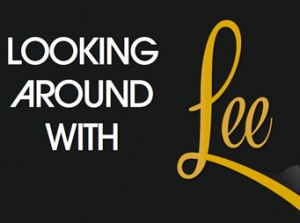Looking Around with Lee
68 – May 2017
By Lee Canalizo
These are the three questions I asked each breeder:
1. Do you think we are changing the make and shape of the Great Dane?
2. What do you see in the Dane ring that you did not see 30- 40 years ago?
3. What did you see in the Dane ring 30-40 years ago that you do not see today?

JUDY HARRINGTON
1. Do you think we are changing the make and shape of the Great Dane?
The Great Dane, as one of the breeds that is described as square in proportion, I see more length and rangy outlines than I did in the ‘70s. The Northeast, where I live, was one of the areas that had several outstanding breeders and Great Dane kennels that did breed to the standard. They were square with substance and yet had the elegance that is described for this giant breed. Dinro, Marydane, Mountdania, BMW are just a few of the names that remain recog- nizable to those in the breed today.
2. What do you see in the Dane ring that you did not see 30- 40 years ago?
I see black, blue and harlequin Great Danes that are outstanding in type, soundness and temperament. Back then the fawns and brindles did most of the winning and were of better head type. The black, blue and harls tended to be coarser with less correct breed head type. There were a few of the “Any Other Color” class, where they were combined and shown rather than divided into individual colors then, that were ahead of their time and very good represen- tatives of the breed but not nearly what we see today. Mantles were not approved to be exhibited until fairly recently.
3. What did you see in the Dane ring 30-40 years ago that you do not see today?
I see fewer brindles and fawns with the depth of quality that I saw years ago. Open Fawn classes were huge and deep in quality, sometimes there were numbers that would be majors in the Open Fawn class alone when it took high numbers for majors. Now I see classes of 1 to 4 at large shows–this would never have been the case 30 or 40 years ago. The same could be said for the Open Brindle class, they were high in numbers but never what the Fawn classes were. Breed head type has remained quite correct in these colors throughout the years.
About Judy Harrington
My first show dog was a Great Dane. My kennel name was Justamere. I concentrated on breeding Great Danes that were sound and typey show dogs and good family companions. Eventually my owner-handling led to a career as an all-breed handler. I finished the first uncropped Great Dane in the U.S. and was also awarded Winners Dog with the first natural-eared Great Dane to win at a national specialty.
I have served as an officer, board member, judges education chairperson, show chairperson, and several various committees in a number of clubs over the years. It has been my pleasure to judge, on a number of occasions, outside the U.S. in France, Sweden, Fin- land and England. I am currently licensed to judge BIS, all Working breeds, all Sporting breeds, and various breeds in Hound, Toy and the Herding Group
Click here to read the complete article68 – May 2017
Short URL: http://caninechronicle.com/?p=124841
Comments are closed











